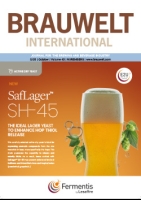RMI Analytics Australian Crop Tour 2017
From October 22 to 25 RMI Analytics conducted a malting barley crop tour in Victoria’s central cropping region taking in the growing regions of the Goulburn Valley and the Wimmera.
The participants visited commercial fields, grain receival areas and malthouses. The harvest was still about four weeks away with excellent looking crops of barley and wheat seen in fields across the region. Expectations are firming of an Australian barley crop of 8.5m MT with yields in the regions visited expected to hit 3-4MT/Ha, an average yield. Expectations are for a good amount of barley, with much of it making malting grade, but the harvest will be substantially reduced compared to last year’s record harvest.
The first farm visited was the property ‘Lanivet’, where Latrobe barley was grown on irrigation. The area is in the heart of the Goulburn-Murray Irrigation District, which covers 9,950 square kilometres, and is fed by a system of lakes and the Murray River. Yields in barley were expected to be 7-8MT/Ha on the irrigated land compared to about 4MT/Ha when grown on non-irrigated fields. Protein was expected at around 11 percent with Latrobe favored due to the higher yields compared to Gairdner, which was previously grown on the farm.
Next the tour visited a private storage site in Mathoura operated by Universal Commodity Management (Grain Direct) which has 80,000 MT of storage spread across two sites (one where genetically modified grains are stored, the other conventionally bred). The site visited stores non-GM canola, wheat, Latrobe barley and feed barley, with last year’s harvested barley being about 50 percent malting grade. Expectations are for a lower percentage of malting barley this year.
On the second day the group visited the farm of Grant Sims, near Lockington. Here Latrobe barley was seen in the field with expectations of 2.5MT/Ha, and malting grade, despite a low seeding rate (60kg/Ha), reduced rainfall and no use of artificial fertilizers, fungicide or herbicide. Mr. Sims almost organic farming operation uses elements of companion planting, herd cattle grazing and leaving stubble on fields to build soil health, fertility and water retention. As well as this he mixes his own liquid fertilizer on farm which is applied at sowing.
One of the latest stops on the second day was a field of Compass barley on the Bailey Family Farm near the town of Sea Lake. Expectations here were for a yield of 3-3.5MT/Ha (10-year-avg 2.5MT/Ha) with the crop sown late, in May, due to excess rainfall. Mr. Bailey told despite Compass not being an accredited malting variety his crop would make malting grade this year with 9.5 percent protein. On another of the Bailey’s fields an excellent crop of Planet was observed with the plants very dense, despite a seeding rate of only 30kg/Ha, exhibiting large ears with many kernels.



